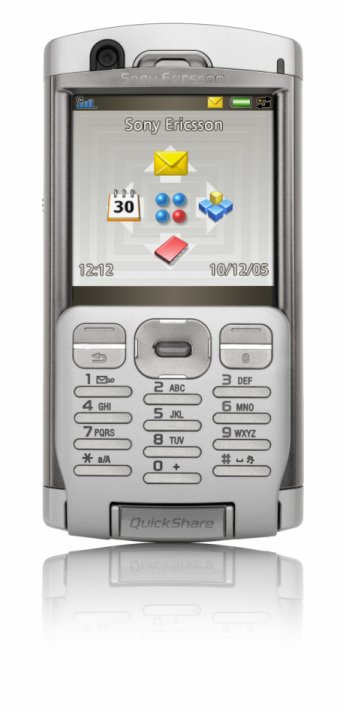London, October 10, 2005 – Sony Ericsson emphasised its continued commitment to Symbian OS today with the announcement of its next generation smartphone to the global development community. The P990 will be the first commercially available smartphone to adopt the enhanced Symbian OS version 9.1 and UIQ 3 software platform. This flagship UMTS smartphone is Wi-Fi enabled, has a 2 megapixel camera with autofocus and features a new hardware keyboard beneath the flip-down keypad. The phone will start shipping during Q1 of 2006.
Technical specifications Function or feature, P990 support
- Operating system – Symbian OS v9.1
- Software platform – UIQ v3.0
- Size – 114 x 57 x 25
- Weight – 155g with battery and flip keyboard
- Screen – Large 2.8 inch QVGA (240 x 320) touch screen with 262 k colours that supports landscape view for camera, video imaging and browsing
- Interaction – Using touch screen, 3 way Jog Dial and dedicated buttons
- WLAN – 802.11b compliant
- Bluetooth – Includes car handsfree profile
- Infrared – Yes
- USB – Yes and charging via USB
- UMTS – E-GSM 900, GSM 1800, GSM 1900 and UMTS 2100
- Application memory – Up to 80 MB user free memory
- Camera – Integrated 2 megapixel CommuniCorder 24 bit colour depth, autofocus for still pictures, video clip recording and video calls
- Video telephony – Application included which allows video calls and video conferencing via the built-in dual cameras
- Media player – Supports playback, streaming and playlists
- Activity menu – Customizable top level menu
- Upgradeable – Via Sony Ericsson Update Service
- FM/RDS radio – Yes
- Browser – Opera browser (version 8) supporting frames and javascript
- Push email – Prepared for all major e-mail solutions including Research in Motion (Blackberry)
- Messaging – SMS, MMS and email
- PIM applications – Contacts, Calendar, To Do, Jotter for notes and sketches, Voice memo and Calculator, Converter, Stop Watch and Timer
- Viewers – Microsoft Excel. Word, Powerpoint and Adobe PDF
- Editors – Microsoft Word and Excel
- Themes – Easy personalisation of animated icons, screensavers, wallpapers and skins
- Speaker phone – Yes
- Memory Stick – Memory Stick PRO Duo slot for up to 4 GB removable memory. 64 MB supplied
- Flight mode – Includes option to turn Wi-Fi on
- Local and remote synchronisation – via SyncML
- Business telephony – Yes
- Java™ ME platform support – Both CDC and CLDC environments supported:
- JTWI 1.0 (JSR-185) consisting of Connected Limited Device Configuration (CLDC) 1.1 HI (JSR-139), MIDP 2.0 (JSR-118), WMA 1.1 (JSR-120). – PDA Optional Packages (JSR-75), Bluetooth (JSR-82), Wireless Messaging API 2.0 (JSR-205), Web Services (JSR-172), Mobile Media API (JSR-135), Mobile 3D Graphics (JSR-184), Nokia UI API 1.1
- Connected Device Configuration (CDC) 1.0 (JSR-36) – Foundation Profile 1.0 (JSR-46), Personal Profile 1.0 (JSR-62),PDA Optional Packages (JSR-75)
Read More via sonyericsson press
